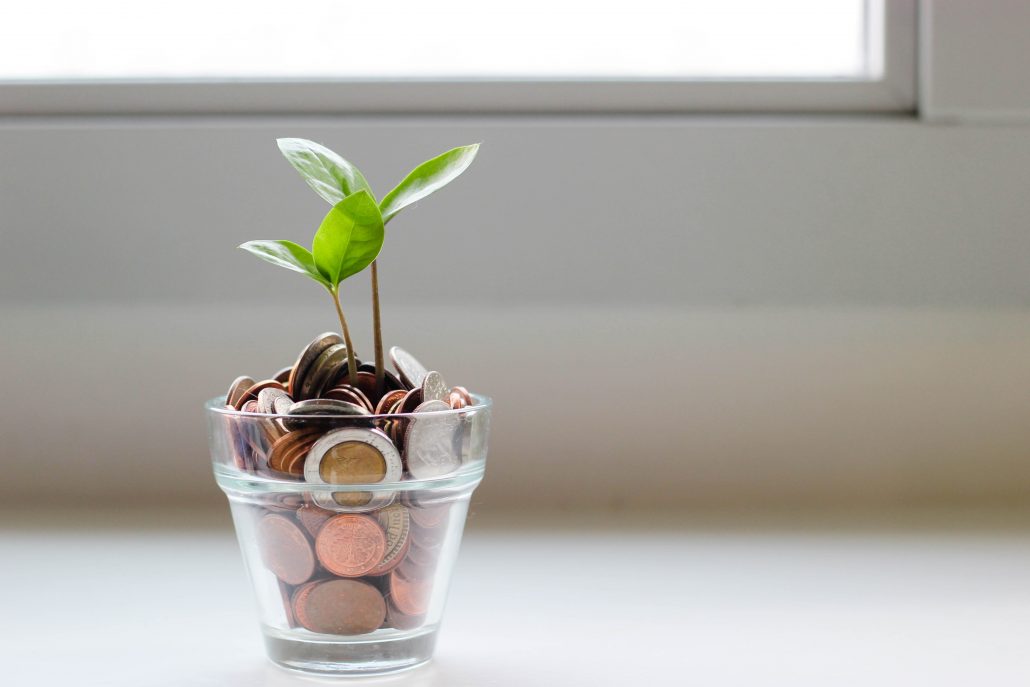With COVID-19 and its tremors felt in the job market, some may consider selling their homes and trade it for a budget-friendlier option in the effort to cut lean in light of rainier days ahead. While that may be a frugal and wise choice for some, it is important to note that the sale of your home does not guarantee that you would be able to recover or retain your cash and reduce your debt, but could potentially even land you into greater arrears! In this article, we will be highlighting to you some of the common pitfalls and unexpected drawbacks to help you make the most informed decision when deciding to sell your home.
For first-time home sellers, the selling price is the only thing considered relative to their initial buying price. For example, a condominium unit bought in woodlands in February 2017 at $800,000 has a selling price of $1,000,000 in February 2020 today. For the unsuspecting seller, there appears to be a $200,000 ‘profit’ to be creamed off from the difference in the buying price in 2017 and selling price today, which they hope could be used to help with the down payment of the second home. While it is true that there has been an appreciation in the value of the home, it may not have considered several factors that could reduce the profitability of this sale, such as inflation, outstanding loan amounts and interest, seller stamp duties and CPF interest payable should you have used your CPF monies to fund the payment of the mortgage. Here is a list of things to look out for when selling your property:
-
Seller Stamp Duty
To limit the frivolous flipping of properties which could destabilise the local property market, the Singapore government has implemented Stamp duties on both the Seller and Buyer. In the context of the sale of your home, the Seller Stamp Duty (SSD) would apply. Check out our previous article for more information the SSD here! Based on our case study of the condominium unit bought in 2017, the holding period was for 3 years, hence based on the table below, the SSD payable would be 4%. (0.04 x $1,000,000 = $40,000). This means that $40,000 is liable to be taxed under the SSD, leaving you with $200,000-$40,000 = $160,000 in ‘profit’. Given that the holding period was only slightly over 3 years and Woodlands being a non-mature estate, it is unlikely that the value of the house would appreciate significantly such that it can outweigh the 4% cost damage incurred from the SSD. This is why the math behind short selling your home in a short period of time could work against you!
| Date of Purchase or Date of Change of Zoning / Use | Holding Period | SSD rate payable |
| Between 20 Feb 2010 and 29 Aug 2010 (all inclusive) | Up to 1 year | 1% on first $180,000 |
| 2% on next $180,000 | ||
| 3% on remainder | ||
| More than 1 year | No SSD payable | |
| Between 30 Aug 2010 and 13 Jan 2011 (all inclusive) | Up to 1 year | 1% on first $180,000 |
| 2% on next $180,000 | ||
| 3% on remainder | ||
| More than 1 year and up to 2 years | 0.67% on first $180,000 | |
| 1.33% on next $180,000 | ||
| 2% on remainder | ||
| More than 2 years and up to 3 years | 0.33% on first $180,000 | |
| 0.67% on next $180,000 | ||
| 1% on remainder | ||
| More than 3 years | No SSD payable | |
| Between 14 Jan 2010 and 10 Mar 2017 (all inclusive) | Up to 1 year | 16% |
| More than 1 year and up to 2 years | 12% | |
| More than 2 years and up to 3 years | 8% | |
| More than 3 years and up to 4 years | 4% | |
| More than 4 years | No SSD payable | |
| On and after 11 Mar 2017 (all inclusive) | Up to 1 year | 12% |
| More than 1 year and up to 2 years | 8% | |
| More than 2 years and up to 3 years | 4% | |
| More than 3 years | No SSD payable |
-
Outstanding loan amount
This applies for homeowners that are leveraging off bank loans to pay off their mortgages. For HDB owners, they are presented with two loan options: HDB concessionary loan or private bank loans, while private homeowners are only presented with the latter sole option. HDB loans are priced at 0.1% above the prevailing CPF Ordinary Account (OA) interest rate and is currently sitting at 2.6%, while private banks have mortgage interest rates going from as low as 1.3% to as high as 3% depending on market sentiments, with an average of 1.8%.
Using our case study, let us assume you take up a private bank loan with 1.8% interest for 30 years on 75% of the buying price of $800K, borrowing $600,000 for your property. Factoring in the interest, the total amount you need to pay back over the course of 30 years is an estimated $776,948.75. A total of $$176,948.75 accredited to interest payments alone. Of course, it might be unrealistic to simulate interest payments over 30 years as one might have sold the property, refinanced its mortgage loan to save on interest, extended/shortened the loan tenure, made a partial prepayment etc. However, sticking with our earlier example, after 3 years (36 monthly instalment payments), you decide to sell the property. Your outstanding loan amount will be $553,495.67. Should you sell your property at a price any lower than an estimated $713,000 (assuming that you’ve also used CPF for the 20% initial down payment), you would have incurred a loss and made a negative sale. In the worst-case scenario, like in 2008 during the sub-prime mortgage crisis in the USA, should you have sold your property for anything lower than $553,495 (assuming no CPF used), you would have incurred a greater loss, which also makes you liable for the difference between the loan payable to the bank and the sale proceeds which you receive.
The sale price of the house must, therefore, be minimally able to repay the remaining of your mortgage and/or the CPF used on the property (inclusive of accrued interest), not considering possible early repayment penalties that may reside. Given the uncertain economic backdrop presiding around the world, it is not guaranteed that you may be offered a good price that allows you to profit. Do take note, when selling your house, remember to minimally calculate the minimum selling price factoring in your bank’s interest rates and principal repayment sum.
(Should bank loans climb steeply, you can opt for the refinancing of your loans, speak with one of our mortgage experts today!)
-
CPF interest payable on monies used
A common misconception amongst Singaporeans is that their CPF funds can be used freely to pay for their home without any limitations. This cannot be further from the truth. The CPF originated as a means of encouraging Singaporeans to have personal savings, with mandates and limitations set in place to hedge against the careless use of retirement and saving funds. While the CPF allows individuals to withdraw portions of the monies to be used to pay for a house, individuals should not see it as a withdrawal, but rather a temporal ‘loan’. Upon the sale of your home paid using CPF, the money withdrawn from your CPF account has to be repaid, coupled with a 2.5% accrued interest. This is to make up for the loss of growth potential when the money was otherwise left in your CPF account growing at a minimum of 2.5%.
From our case study of a condominium purchased at $800,000, you would be required to pay for 5% of the property price in cash ($40,000), and another 20% of the remaining downpayment in either CPF Ordinary Account (OA) Funds ($160,000) or cash. The maximum Loan-To-Value (LTV) in Singapore is capped at 75% of the property price, assuming your bank is willing to fully finance the loan. This means that the remaining $600,000 is to be paid over monthly mortgage instalments to your bank. For calculation purposes, we will assume the loan to be for 30 years, at 1.8% interest on $600,000 and monthly mortgage payments made thru CPF funds entirely. The monthly mortgage will amount to $2,158.19. Given that the home was held for 3 years from 2017 to 2020, a total of 36 mortgage instalments would be made, with a total of $77,694.84 contributed from CPF in total. Upon the sale of the home, the total monies repayable to CPF would be inclusive of the earlier mentioned 20% initial downpayment of $160,000 and the total CPF paid to monthly mortgage payments of $77,694.84. Hence, a total of $237,694.84 is the principal sum repayable into your CPF account. With a 2.5% mandatory interest chargeable on the CPF funds withdrawn, the final payable would be approximately $263,814.23 (the initial $160,000 racks up a significant amount of accrued interest as its deployed right at the beginning)
At the begin, it seems that there would be cash proceed of $200,000 difference between the buying and selling price. Upon calculations in Points 1,2 and 3, from deductions made to CPF interest rates, interest payable to the bank, seller stamp duty and potential penalties for premature termination of the loan tenure, there might not be any cash proceeds remaining that validates the sale as a profitable one.
-
The cost of your new apartment
Upon the sale of your home, you would need to find another to live in. Ideally, one would naturally prefer a larger home which could cost more. However, living in a home that costs lesser and is friendlier on the wallet might be on the cards especially in such uncertain times. Putting aside market conditions that may directly or indirectly affect property prices and ultimately your search for a suitable property, you should you be able to find a home that is cheaper. Not forgetting, upon the purchase of your home, you would be liable for the Buyer Stamp Duty amongst other costs such as renovation costs. Especially if you have already made a loss upon repaying your outstanding mortgage earlier in points 2 and 3, these further costs would set you into a further series of debts and financial burdens.
These abovementioned points are only just scraping the surface when it comes to the real cost of selling your home. There are other aspects of costs that we have yet to touch on, such as marketing costs (e.g realtors), early repayment penalties, legal fees and opportunity costs. Therefore, it is crucial that decisions concerning the sale of your home are not made under duress as far as possible, to avoid short selling.
However, talking about the sale of houses would be missing the essence of a key important value: the art of saving and planning smart. A mortgage is often one of the largest expenses in a person’s life, and it is important to ensure that your financial habits are kept in check to avoid jeopardizing your financial wellbeing!
Want to find the best mortgage rate in town? Check out our free comparison service to learn more!
Read more of our posts below!



